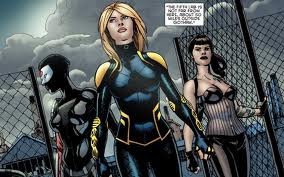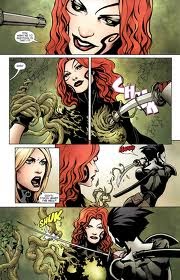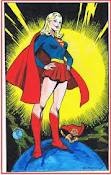At the end of
STINKING ULTRALIBERALLY I noted that I'd challenged the blogger then known as Colin Liar to respond to my counter-assertions on the Sequart response-thread for his
hatchet-job attack on me. That was over a week ago, and I have no idea whether or not the Liar let the "chickenshit" comment stand on his blog. I don't mind debating a rational mind on a blog but the Liar is far from that and his drooling sycophants aren't any better. It's my conviction that he should be accountable for his lies on Sequart (assuming that Sequart was even willing to continue the business). Since he has not responded on the comment-thread of his attack-essay, he therefore earns himself a new name:
"Chicken Colin"
-- which, as I think about it now, is a much better nickname due to its coincidental but felicitous resemblance to the phrase "chicken colonel," meaning an officer who covers up his cowardice with bravado. And what could be more applicable than the "chicken" insult to someone who concludes his essay by asserting that he won't answer for his statements because he's said everything he had to say, yet quotes the famous Dirty Harry line with leaden humor as if a faux admission of cowardice exempted him from accusations of the real thing :
I’m happy for anyone to say what they like. Go on, punk, make my day, since, er, I’m off anyway.
It's true, so far as it goes, that responding to the broadsides of Internet enemies is a colossal waste of time. But I think that if you start an argument, you ought to be able to stand your ground for at least a short time before throwing up your hands.
I'm sure that I could beat Chicken Colin in a fair debate, but in practice he would surely take refuge in more lies, lies, and dumbhead statements. I've encountered a lot of dopey Internet debaters who also live by Chicken Colin's credo--"When in doubt make shit up." Their motive for so doing was the same as the Chicken's: the more stupid statements you make, the more you force your rational opponent to waste time on them rather than on the kernel of the disagreement. However, little though I might respect some of those ertswhile opponents, a few of them had at least a degree of intestinal fortitude, in that they tried to go the distance even while spouting drivel. Chicken Colin couldn't even go one round.
Of course, I don't imagine Sequart would really want to host even one quick round between attacker and respondent. Whatever their motive for printing Chicken Colin's attack, they have no percentage in participating in an ongoing net-battle. Originally I thought that they might have done their reputation some damage by printing the chicken's shit-- not because it offended me, because no one but me cares about that-- but because the Chicken's scrathings are so laden with ignorance and stupidity. For instance, because I linked one of my Sequart essays to an earlier ARCHIVE post about Nietzsche, the Chicken wasn't content to attack my logic, but thought he'd go after Nietzsche as well, in his very first paragraph:
[Phillips] is, after all, a man quite capable of linking without any apparent irony to a self-composed piece in which Nietzsche is respectfully referenced as an insightful authority whose thinking can apparently help explain why “superhero comics, like many other adventure-orientated genres, are likely to always have a dominant appeal for male audiences”. There’s clearly no reasoning with such beyond-the-event-horizon, chauvinistic points of view, and any attempt to do so inevitably runs a serious risk of uselessly provoking the kind of highly-charged and futile bun-fighting which Godwin’s Law describes. I’ve always believed in simply ignoring the work of those folks capable of imagining that the words of syphilitic 19th century sexists, no matter how brilliant and fascinating in their own terms, can add anything of deciding worth to our century’s discourse about sex and gender, unless, of course, it’s to sign up the bad examples from the better.
The evocation of Godwin's Law is a predictable dodge: "I don't want to engage in a long drawn-out argument (?bun-fighting?) because sooner or later someone will commit the *Reductio ad Hitlerum* fallacy!" Spoken like a true chicken, of course, but the more egregious idiocy is his characterization of Nietzsche as a "syphilitic 19th century sexist."
Let's see what might be produced if the cackler were forced to account for these three squawks:
*"Syphilitic"-- I love this, because on one hand the Chicken pretends to take the high road-- no appeals to Hitler, please!-- but it's OK to characterize one of the 19th century's most formidable philosophers as merely "syphilitic." If I cared anything about Godwin's Law, I'd avoid noting that Hitler did indeed refer to syphilis as "the Jewish disease" in MEIN KAMPF, thus establishing a similar connection between physical illness and moral turpitude. But although the Chicken's comfortable with using "syphilitic" to sum up the philosopher, it's not by any means proven that the diagnosis of tertiary syphilis for Nietzsche circa 1889 was correct. But even if the diagnosis was correct, what would that prove? That Nietzsche was philosopher by day, evil woman-enslaving whoremonger by night? Nietzsche promulgated his philosophical works for about 20 years prior to the diagnosis. Since 15 years is cited as the longest lag-time between original infection and the development of tertiary syphilis, does that mean that for the first 5 years of Nietzsche's philosophical life, those works are OK while everything in the next 15 years falls under the dread accusation of being produced by a "syphilitic" mind?
*"19th-century"-- there's not many opinions stupider than the notion that we modern persons of the 20th and 21st centuries don't have anything to learn from philosophers of the past except "to sign up the bad examples from the better," whatever the hell that means. I mean, a whole century separates Nietzsche from the "social scientists" that Chicken Colin seems to admire (but never bothers to name), so it's a given that they must be right and Nietzsche must be wrong, because younger is always smarter than older. The Chicken pretty much disproves that everytime he opens his mouth about my intentions and ideas, but maybe he's the rare exception. It's simply precious that he allows that older philosophers might be "brilliant and fascinating in [sic] their own terms."
*"sexist"-- I've pretty much covered this under STINKING ULTRALIBERALLY, in that the blogger formerly known as Colin Liar condemns both Nietzsche and Sade as sexists but can't even be bothered to produce even the most rudimentary proofs of that position. Again, the Chicken, while horrified that anyone would dare to tarnish "this century's discourse about sex and gender" by bringing up a thinker from a whole century back, is OK with tossing out inflammatory labels, as long as they seem to serve the agenda of his side, the side of the mouth-breathing ultraliberals.
Now, although I think that a swinish line like this ought to have been a signal to Sequart's editors *not* to give Chicken Colin a podium, I'm glad that they did so. Had Sequart denied the Chicken, it's most likely he would have printed the same essay on his blog, "Stinking About My Comics," where his reading-impaired readers would have championed it as brilliant and percuous (which would be the closest they could come to pronouncing "perspicuous.") Chickens being chicken, I'm sure I would not have been able to respond at length, if at all, on his blog. I would have had no outlet for response but my own blog.
Because Sequart did print it, I was able to make my responses more public. Sequart could have closed the essay from comments, but I appreciate that they did not, even though I don't imagine the mini-controversy earns them any brownie points in the blogosphere. A few posters did attempt to poke holes in my arguments, and so I had the chance to refute some people who agreed with some if not all of the Chicken's points. My favorite poster was the guy who echoed the Chicken's passion for things modern, claiming that Barthesian "death-of-the-author" studies had supposedly superseded all earlier literary criticism. Yet when I defended the idea that there might be a pluralism of different approaches-- New Criticism, biographical criticism-- the poster accused *me* of "dismissing and mocking the validity of alternate forms of criticism." Hey, guy, are they "alternate" or "dominant?" The world really wants to know.
Had that argument gone on, I had planned to observe that lit-crit positions are not comparable to discoveries involving scientific data. Once science can identify oxygen, the theory of phlogiston goes out the window, never to return. But it's not true that "the intent of the author hadn’t mattered in lit crit since the 1920s," that's only true to critics who take that particular position. Both lit-critical positions and philosophies, are more like religions than scientific theories: all three are true only in an intersubjective manner, for those who grant the attendant suppositions.
Still, though I was glad to get one last use of the Sequart forum, it's enlightening to see just how far some fans will go to defend their agendas, be they liberal or conservative. Contrary to the Chicken's statements, there's nothing sexist in my insistence that Kelly Thompson's argument should be analyzed from all possible angles (even evil Nietzschean ones). Any reader of this blog knows that I've analyzed male critics like Gary Groth and Noah Berlatsky no less intensely. What fires the Chicken's indignance is not sexism but the attempt to suggest that the representations of men and women in fiction might be a matter more complicated than the usual pre-packaged cant on "objectification."
And that's as good a segue as any to mention that I still plan to address Thompson's essay from a few more angles, as I said that I would in the STINKING essay-- specifically on a question trumpeted forth by the Chanticleer himself: What's the difference between "sexism" and "sensationalism?"
ADDENDUM: Godwin's Law is BTW based in a fallacy itself.
It assumes that if I draw a parallel between Adolf Hitler's equation of physical illness and moral turpitude, and Chicken Colin's equation of physical illness and moral turpitude, that the purpose must unilaterally be an attempt to portray a mere comics-blogger as being as evil and/or repressive as the Nazi leader.
That would be ridiculous, of course. There's no way that a mere comics-blogger could ever be as evil as Adolph Hitler.
But the "law" assumes too much in claiming that one can only be using the comparison to address issues of raw evil.
When I draw the parallel, it's not necessary because I want to say that Chicken Colin is as evil as Adolph Hitler--
Only that he's as stupid as Adolph Hitler.
Which is a very different comparison, don't you know.






































